Modernization programs for armored vehicles of the British Army
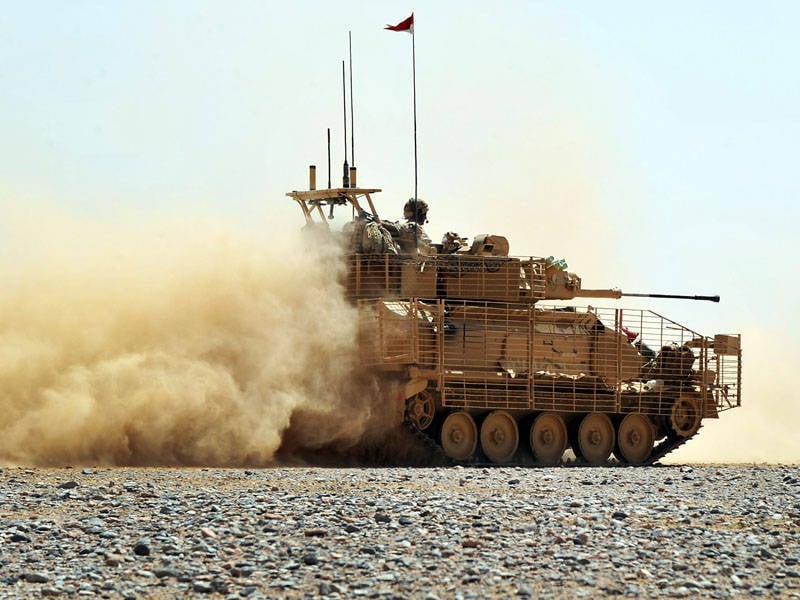
Spartan CVR (T) armored reconnaissance vehicle remains in service with the British Army
In the UK, the amount of funding for new programs is constantly being revised and adjusted, and therefore the army is trying to bring a diverse fleet of combat vehicles to a common denominator amid the withdrawal of its troops from Afghanistan. The article discusses the current state of the British strategy for armored vehicles.
The British Army is making plans to restore order in its current fleet of armored vehicles, but at the same time actively protects future programs for the purchase of equipment that may be vulnerable to financial turmoil.
Its flagship program for the middle class armored vehicle - Scout Specialist Vehicle (SV) - appears to have been shifted in time, since the three prototypes that should be delivered by the middle of 2013 have not yet appeared. The platform is designed to replace the outdated CVR (T) combat vehicle (Combat Reconnaissance Vehicle (Tracked)), which began to enter the troops back in 1972-73.
General Dynamics UK (GD UK) received in July 2010 a contract worth 500 million pounds from the British Department of Defense for the demonstration and qualification phase of the Scout program, which is due to end in 2015. But it is not even clear if steel sheets are cut into the first three prototypes of the Scout SV machine. Three more prototypes of other options (supply and evacuation machine, supply and repair machine, reconnaissance machine) should be ready by the end of 2013 for the demonstration stage of RB1.
The company showed a prototype model at DSEi 2011, and it moved from the dead center with the opening of a new center of promising army systems in December 2012, which cost 12 millions of pounds. A preliminary analysis of the design and testing of the SV was also completed, during which the integration of the CTA International 40-mm gun, armor and electronics was tested.
The mobile test unit MTR (mobile test rig) with the MTU 8V199 diesel engine installed and the Renk HSWL 256B automatic transmission was manufactured in June 2012 and was supposed to pass accelerated life tests in Spain in 2013. The company GD UK was unable to answer questions on the topic, and the defense ministry refused to comment on the status of their programs and therefore it is not known whether the MTR tests were completed. It is unlikely that Scout has reached the stage of critical evaluation of the project.
The Scout machine is all that remains of the closed program FRES (Future Rapid Effects System - a promising rapid response system) according to which originally it was planned to manufacture over 3300 lightweight machines (weighing up to 30 tons) of five types in 16 different versions with a total cost of 13 billion pounds. It was also intended to develop a universal utility vehicle (UV), which was also canceled. The current weight frames for SVs range from 34 to 42 tons.
The demonstration stage contract includes options for the first batch of serial machines in quantities from 400 to 589 pieces, followed by the second batch. But the state of affairs today is such that these options may not be exercised, since everything depends mainly on the budget planning of the Ministry of Defense. The cost of the demonstration and production phase is 1,39 billion pounds.
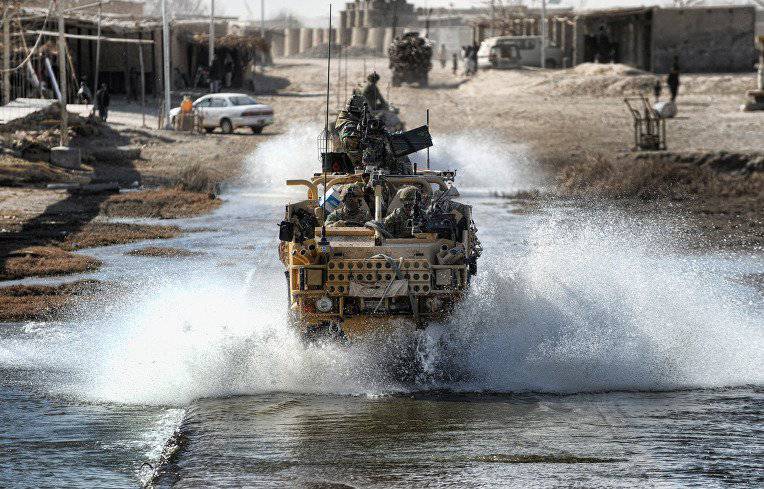
Jackal's car is popular for its excellent cross-country ability, it is used in the British army for long-range intelligence.
Rivalry time
For funding allocated over the next ten years to the British armored vehicle, Scout will compete with Warrior's Extension Program (WCSP), which is also in the demonstration phase, but is moving faster and with a life extension program tank Challenger (CSP), which is still in a conceptual stage, although a decision to start development is scheduled for 2014.
Brigadier Ben Barry, a senior researcher at the International Institute for Strategic Studies (IISS), said: “The UK will leave three Challenger tanks in the foreseeable future as part of three armored brigades, so we need the Challenger CSP program. However, we don’t know if there are financial opportunities for the Challenger tank, which would allow us to maintain the entire fleet. ”
Barry said that during the Iraq conflict approximately 30 Challenger tanks were upgraded by installing onboard armor, frontal armor, a set of jammers in the bow, silencers on the turret, lattice armor from the RPG on the sides and aft, remotely controlled combat module and additional sights The question is still open, whether all this will be installed on all tanks.
“In order to restore the capabilities of armored brigades, they need not only tanks, BMP Warriors and Scout, they need a lot of general-purpose armored vehicles. It was planned that the FRES UV machine would assume the role of an armored troop-carrier for infantry battalions and would also become the basis for all general-purpose vehicles that need to be replaced. This begs the big question: where is FRES UV? ”
On the horizon
In June, Brigadier General Robert Rice, head of the armored vehicles program, told Defense Vehicle Dynamics, that a program on the armored vehicle support group (ABSV) and a general-purpose vehicle (UV) program were visible on the horizon. Approximately 10 billion pounds will be spent on armored vehicles in the next ten years, and 380 million pounds should be spent in this fiscal year.
The UV program is still in its early stages, and Rice said that only one person in the group works full time on her requirements. He suggested that the requirements for UV will meet the requirements for an already finished military machine after an accelerated and formal competition. As expected, funding will open in the 2015-16 fiscal year.
“I have a large amount of money there. In recent years, the army is turning its head, considering how much UV cars it needs and how it wants to move forward, ”he noted.
“My opinion, which I brought out from discussions with staff officers, is that they may try to meet these demands in various ways. Therefore, maybe a little more ABSV machines, or other platforms that we already have, maybe more Foxhound, more Scout machines, or maybe something else ... We assume that the finished project will be part of the key requirement. ”
If funding does not open before the 2015-2016 year, then an inequality of opportunities for a general-purpose vehicle may occur. “For example, if an armored brigade is to be formed in the 2017 year, but the UV car does not enter service until the 2020 year, then it becomes risky,” Barry noted.
“If we look at the graph, then the UK leaves Afghanistan in 2014 - 2015. We do not know and cannot say publicly when the army should create the capabilities that are described in the Army 2020 program as three fully combat-ready armored brigades. ”
“Warrior for the UV project is an option. There are Warrior vehicles that are not needed as combat vehicles and therefore they can be used to fulfill some of the UV requirements. If you look at the needs of the UV utility car even before Afghanistan, before 11 September 2001, they are performed by combining the Saxon BTR, the FV432 BTR, and CVR (T), ”Barry said.
In accordance with the WCSP 65 program, BMPs are being upgraded by installing CTAI 40-mm cannons and new towers supplied by Lockheed Martin. The army intends to upgrade 300 machines in addition.
Rice said: “We need to decide with the army headquarters what we can do with these platforms and how much it will cost. This work needs to be done, but the costs in this case can easily go beyond the financial framework of the UV project, for example. "
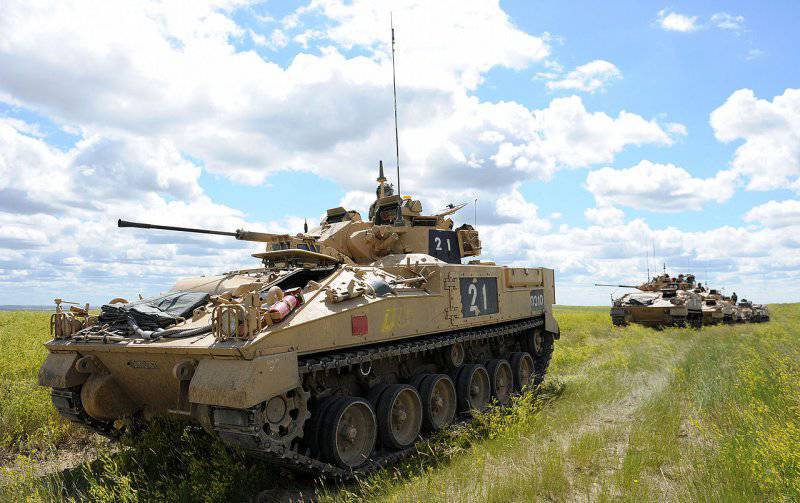
BMP Warrior (in the picture - the machine of the Canadian army with its own tower) will receive a tower from Lockheed Martin, which will allow to fire in motion
New Warrior cars
According to Lockheed Martin's WCSP program, five Warrior variants are being upgraded: infantry carrier, 510 object number; command post 511; evacuation machine 512; repair machine 513; and the artillery surveillance option 514.
The WCSP program focuses on three main areas: lethality upgrading (installing a CT40 cannon into a turret, integrating fire and maneuvering capabilities); modernization of the electronic architecture (integration of communications and data information systems, a corresponding improvement in power supply); and survivability (increased defense of the tower plus mounting points on the body for modular armor). Lockheed Martin also installs a new cooling system and reassembles the crew compartment.
Lockheed already has one Minus 1 risk reduction machine from the pre-competition WCSP program, which is still being used for testing. The second machine under the designation “Unit Zero”, which is not qualified but fully functional, will take part in official risk reduction tests.
The company will then manufacture 11 pre-production machines for endurance testing in all versions: six 510, two 511 and 512, 513 and 514 each.
Video review of the program for extending the life of the BMP Warrior
Further, in accordance with the production part of the contract, upgrading to 380 machines is envisaged. All of them will undergo a general upgrade of their electrical systems and life support systems, a new tower will be installed on 250 machines. The army hopes to upgrade all 643 machines.
Lockheed Martin completed an analysis of the project and system architecture in November 2012.
Since then, the company has conducted another analysis of the platform management system software and increased the number of people working on the project from 35 to 130 people. Currently, a preliminary analysis of the project is underway, and risk reduction tests will take place throughout the 2013 year. At this time (August-September 2013 of the year), the Unit Zero machine is being manufactured, refined and integrated with the aim of preparing manual shots assigned to the beginning of the 2014 of the year. After the design and functionality has been completed, the production of 11 pre-production machines with sea trials scheduled for 2015 year will begin. Production will begin in the 2016 year, and the initial batch of vehicles will be ready for adoption in the 2018 year.
Those of the Warrior BMP, which do not receive a new tower, will receive the designation ABSV. They will perform medical, repair and evacuation tasks, will serve as a command post and an armored personnel carrier. It is expected that approximately 100 BMPs will be allocated to these options, but the program is still at the concept stage, and it is not yet clear how it will develop. It depends on the progress of the Scout program, which will replace the FV430 series machines.
Legacy of urgent operational requirements
However, modernization programs and new machines are perhaps the least of the problems of the Ministry of Defense. Starting around 2005-2006, when insurgent attacks on NATO troops in Afghanistan began, there was an urgent need for more machines protected from IEDs and mines. After that, the British army began haphazard purchase of cars for urgent requirements and put into operation eight new types of cars in numerous versions.
And now there is a difficult task: to introduce them into the main fleet of vehicles in order to create new adaptable rapid reaction forces, defined in the development strategy of the army "Force - 2020".
“The main thing here is: who will be the users of these armored vehicles? There are three armored brigades with all their combat and material support, and there are three adaptable force brigades with light reconnaissance battalions of protected mobility. Do we have confidence that the plans and funds available for armored vehicles up to 2020 will translate into real deliveries? That is the question, ”said Barry.
The representative of the Ministry of Defense said that “at present, work is underway on the introduction of all the machines produced according to urgent requirements in the main fleet of army vehicles. Most of this work is commercially sensitive and therefore it would be wrong to give additional comments on this issue. ”
Lieutenant General Chris Devrel, head of the ground systems department at the Defense Supply Directorate, said that all “emergency” vehicles would be introduced into the main fleet in accordance with the developed strategy. Apparently, by now all the Pinzgauer Vector machines have already been decommissioned, and perhaps this is a precedent for all the remaining types.
As an interim measure and in order to replace the Snatch Land Rover in 2007 - 2009, 196 light armored Pinzgauer Vector 6x6 armored vehicles with a total value of 40 million pounds were put into operation. Further, the placement of new orders was suspended, as the Vector machines, as it turned out, did not have sufficient protection for the commander and driver in the front cockpit and were actually replaced by Mastiff MRAP machines. Machines have not been used for some time and, as already mentioned, were removed from service.
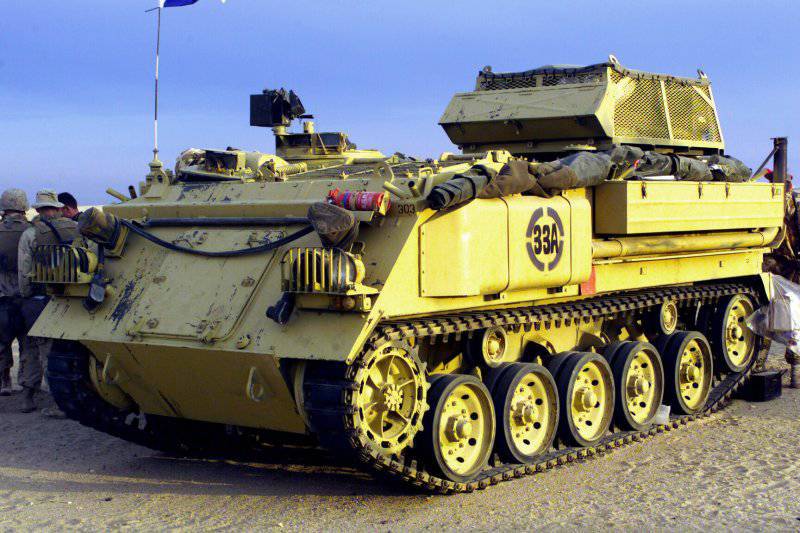
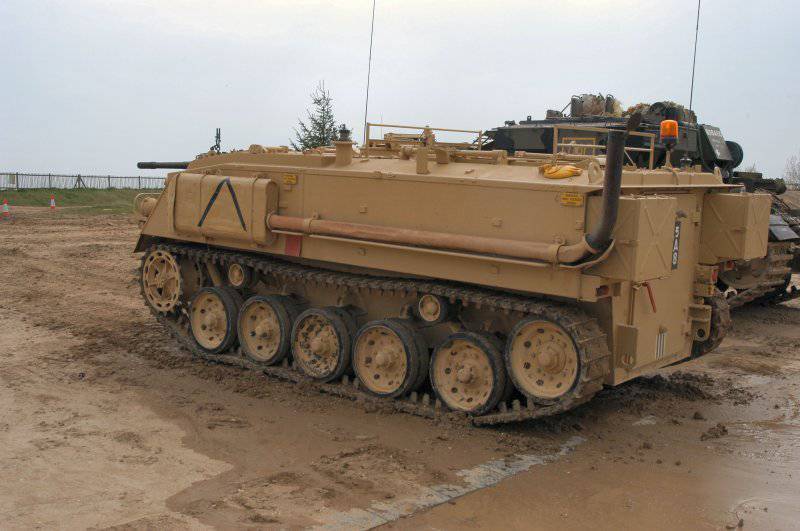
Machine FV432 from different angles. It will remain in service with the British army until the mid 20-s
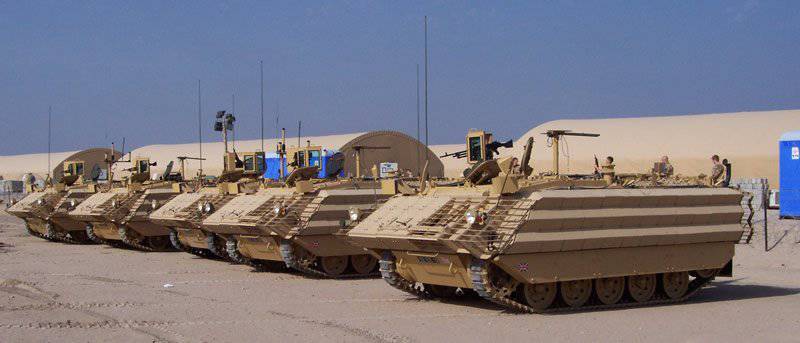
Light tank FV430 in the version of the Mk 3 Bulldog
Most of the FV430 machines were also decommissioned, but the 432 variant continues to be in service. Beginning with 2006, the Defense Department’s Defense Administration supplied 124 upgraded vehicles in the FV430 version of the Mk 3 Bulldog with a total value of 184 million pounds, which will allow FV432 to remain in the troops until the middle of the 20-s. This has become part of the program to replace the Pinzgauer Vector and Mastiff wheeled Fatching Rovers and the FV432 tracked cars. New options Bulldog will allow to perform a wider range of tasks, thereby freeing the BMP Warrior for more complex combat work.
Main armament
Apparently, decisions were taken on the remaining machines, but so far no measures have been identified to ensure this process. What is exactly known from the edited Transformation of the British Army 2020, published in July 2013, is that the main machine of the three regular light reconnaissance regiments will be the Supacat Jackal, although this machine is protected only from mines and IEDs. It is also expected that the Foxhound LPPV light protected patrol vehicle (light protected patrol vehicle) will be used to perform universal mobile tasks and six battalions of new adaptable forces will receive this model.
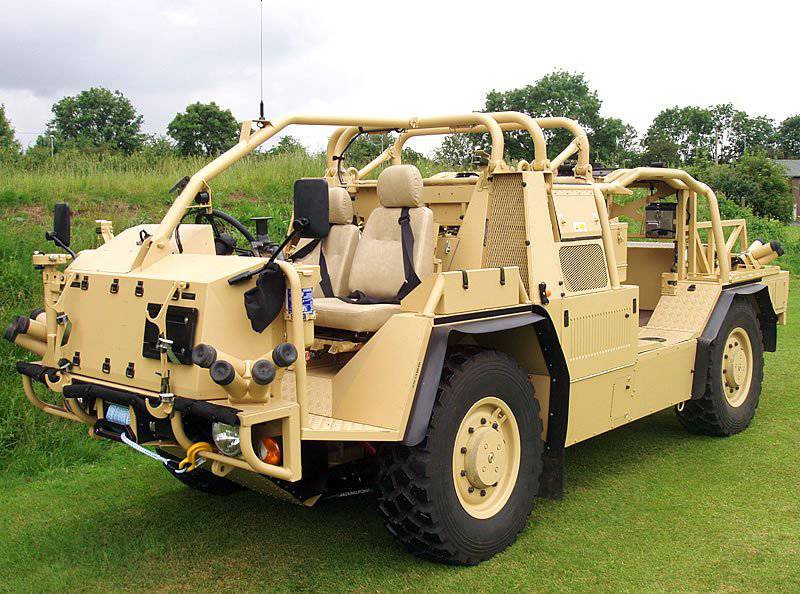
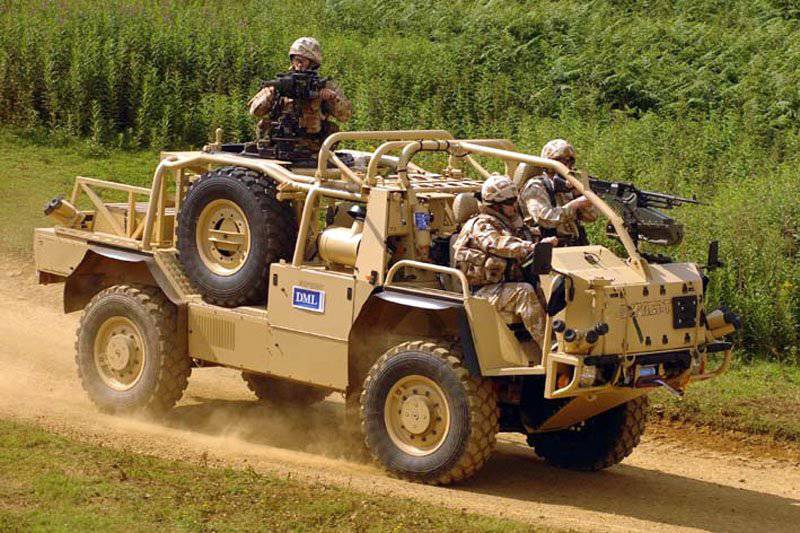
Car Supacat Jackal 4x4 protected only from explosions in mines and IEDs
Supacat and Babcock Marine delivered long-range patrol vehicles Jackal 4x4, entered the troops in 2008-2009, the Coyote 6x6 combat support option on 2009-2010, and upgraded Jackal 2 and 2-a-vehicle JacknXNNXX in 2009-2010's, and upgraded Jackal 300 and 1-76-300 combat vehicles, and updated Jackal 2 and NNXX-XNUMX. They have earned popularity in the special forces: there are operated over XNUMX Jackal XNUMX, XNUMX Coyote machines and more XNUMX Jackal XNUMX machines.
The latest 46 million pound contract for the 51 V-shaped Foxhound LPPV 4x4 machine was issued by the Department of Defense in November 2012. Thus, 376 of all such machines have been ordered, and 196 has already entered the troops. The Foxhound machine is designed to replace Snatch Land Rover, it was selected in September 2010 and manufactured by Force Protection (currently General Dynamics Land Systems) and Ricardo. The machine is equipped with a Steyr-Daimler-Puch diesel engine with a volume of 3,2 l, electronic architecture from Thales UK, armor from QinetiQ and a crew compartment from Formaplex. The Foxhound has been in service in Afghanistan since 2012.
The updated version of the Transformation of the British Army 2020 also stated that the Mastiff and Wolfhound vehicles would be involved in heavy mechanized infantry battalions. The first machine Mastiff 6x6 MRAP entered the troops in 2007 year, in Afghanistan, it began its service in April 2009 year. The cars were made in the USA (where they got the name Cougar) by Force Protection and refined by NP Aerospace according to British specifications. In total, 407 machines were delivered to the troops. Delivery of the Ridgeback 4x4 MRAP variant began in the middle of the 2008 of the year, all 177 of these vehicles were delivered to the troops.
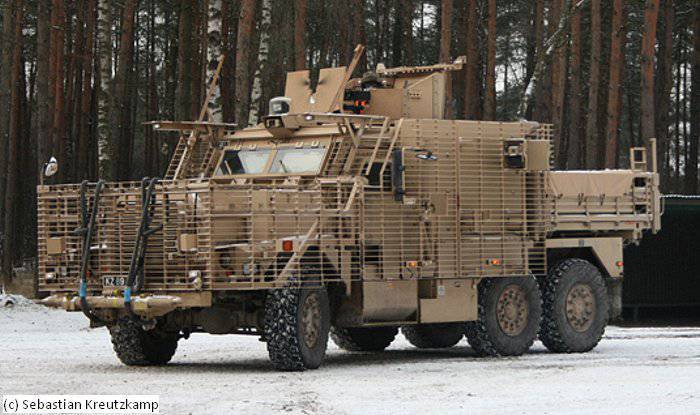
Wolfhound TSV (tactical support vehicle) from Integrated Survivability Technologies
The joint venture between NP Aerospace and Force Protection, Integrated Survivability Technologies, received the first contract in 2009 for the supply of Wolfnound TSV (tactical support vehicle) 97 tactical support vehicles. This order was later increased, and a total of XVUMX TSV vehicles were shipped, including the 125 general-purpose version, 81 deactivation machines for unexploded ordnance and five transport dogs for service dogs. Also during this period, the Panther CLV command and control vehicle (command and liaison vehicle) was manufactured and supplied to the army by BAE Systems 39. These vehicles are based on the universal Iveco machine, where they replaced a number of commander vehicles from the CVR (T) family.
ST Kinetics manufactured 115 articulated Warthog SUVs for the UK in 2010, all of which were supplied to the British army in 2011. They were ordered to replace the Swedish BvS 10 Viking. However, it is not clear whether new orders will be placed, as Viking machines are awaiting upgrades.
Viking machines were made by the Swedish company BAE Systems Hägglunds for the Royal Marine Corps. After serving in Afghanistan, they constitute a mix of all sorts of standards, since in order to increase mine protection, numerous upgrades were carried out in accordance with various pressing requirements. It is necessary to restore their buoyancy, also make changes to the protection and payload and reduce logistic requirements. In September, the government agreed to modernize 2012 machines worth 99 million pounds, which should be completed by the end of 38.
BAE Systems has already upgraded the CVR (T) 58 machines to the Mk 2 standard, all of which were delivered in the 2012 year. Scimitar towers with a Rarden 103 mm cannon, as well as additional booking kits to protect against IEDs, were installed on the FV30 Spartan case. Enhanced power units were installed to keep the machine manoeuvrable despite the increase in weight from 8 tons to 12,5 tons.
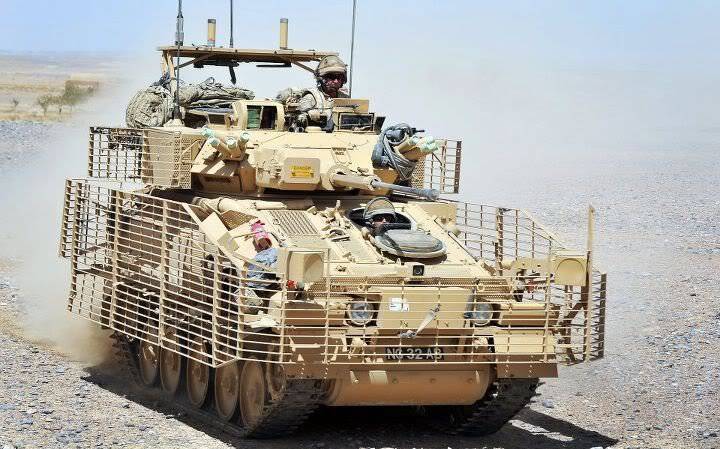
CVR (T) Mk 2 Series Combat Reconnaissance Vehicle with Scimitar Mk 2 Tower
Much work still needs to be done, but if 10 was actually allocated billions of pounds for the renewal of the fleet of armored vehicles for ten years, then the army, with such means and a strong desire, is certainly obliged to bring its capabilities to the standards defined by the Transformation of the British Army 2020.
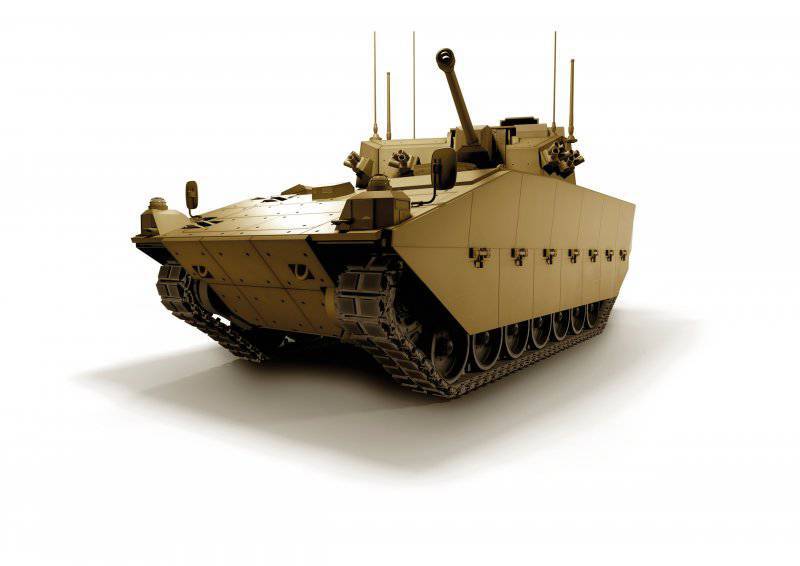
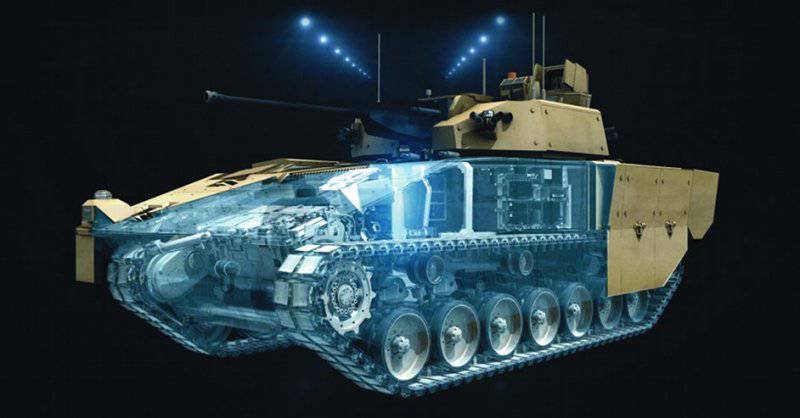
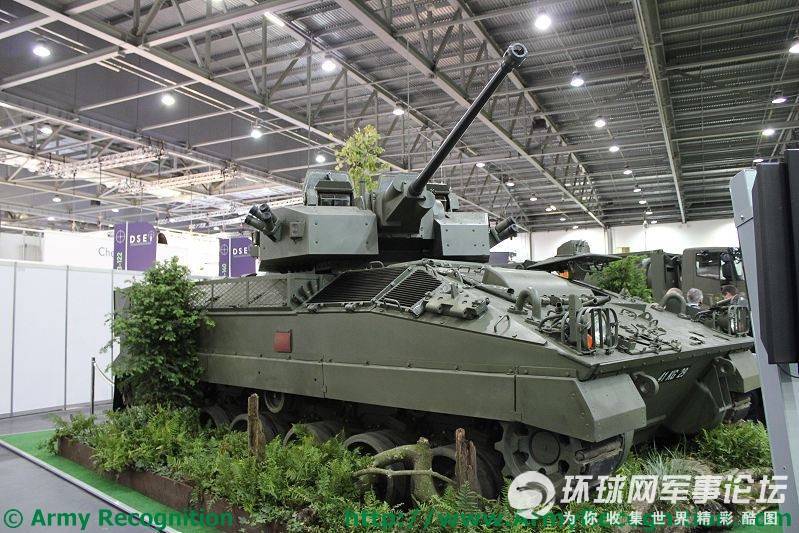
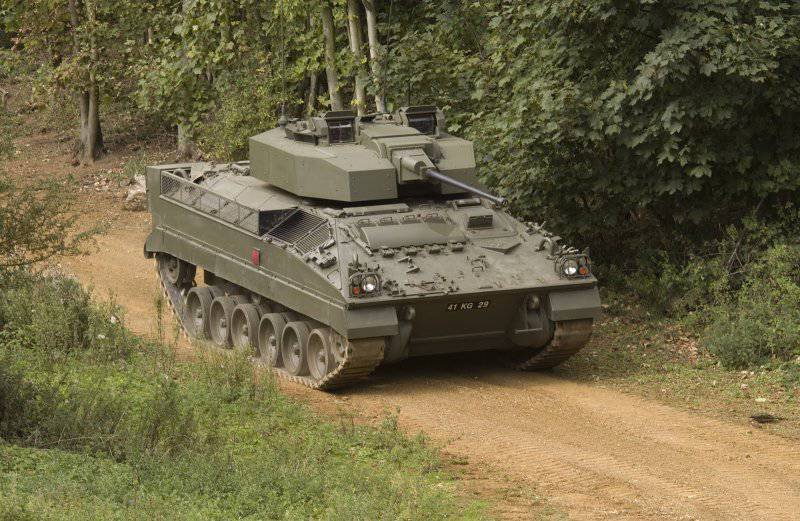
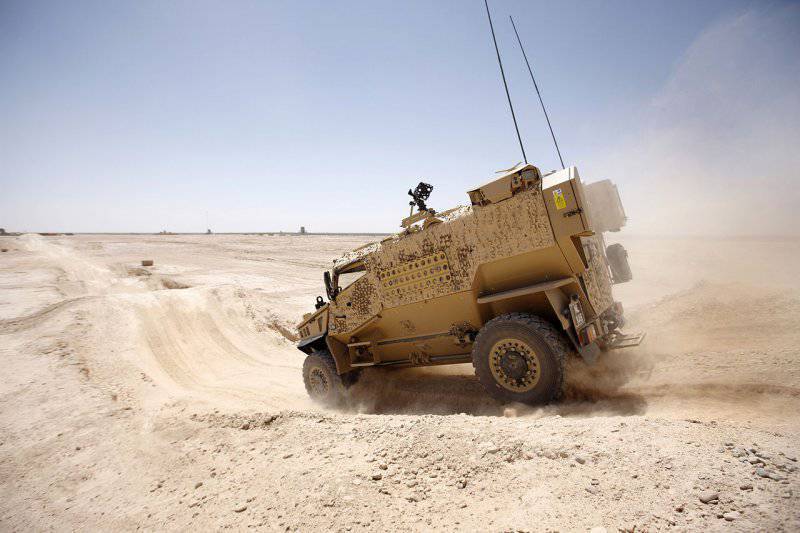
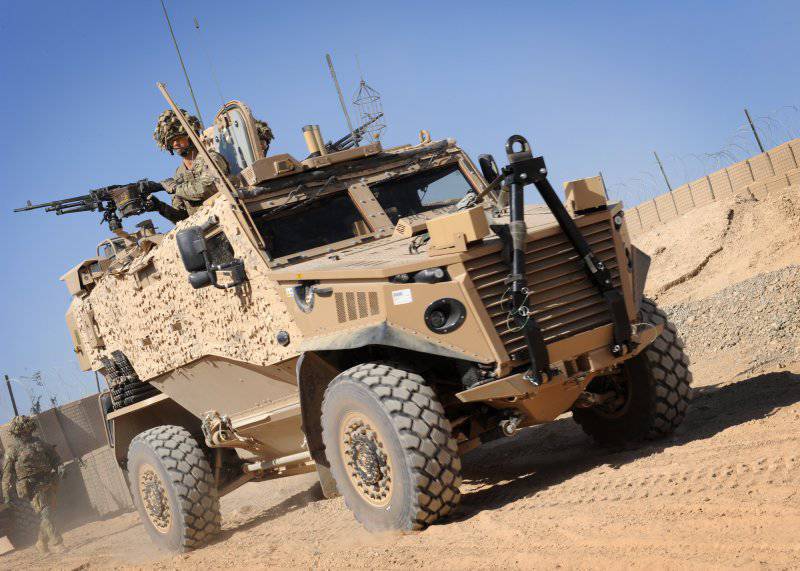
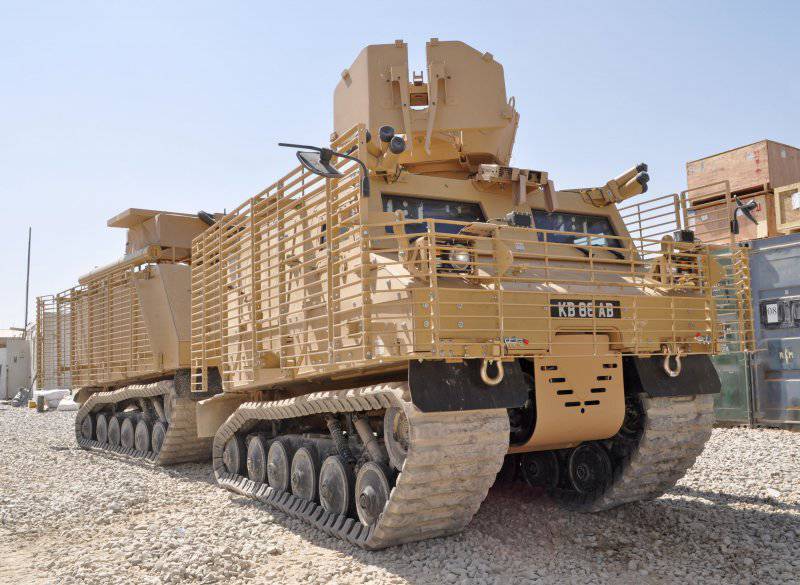
Information